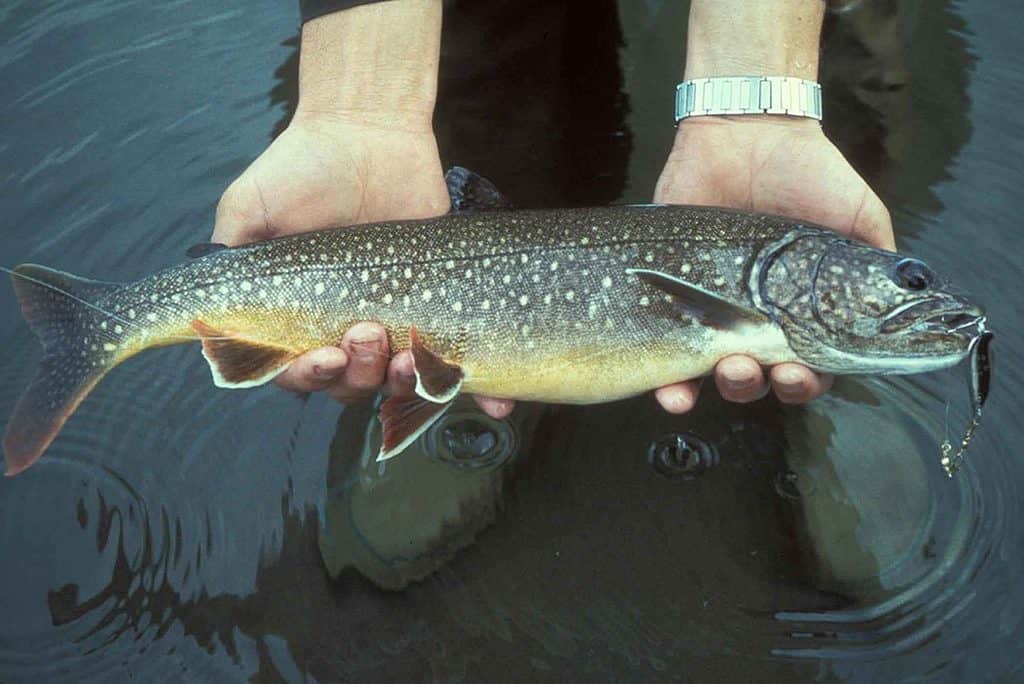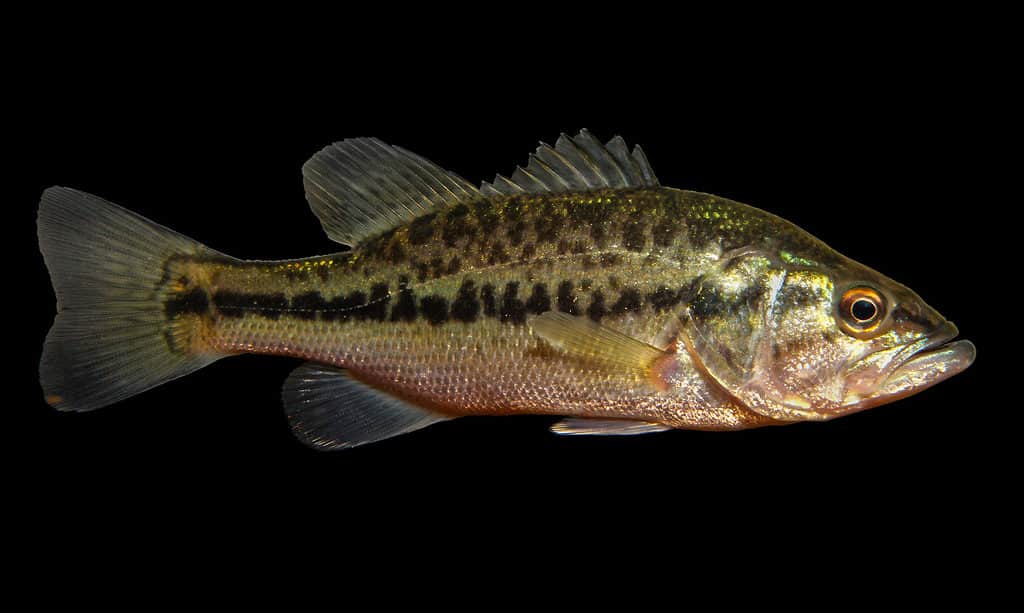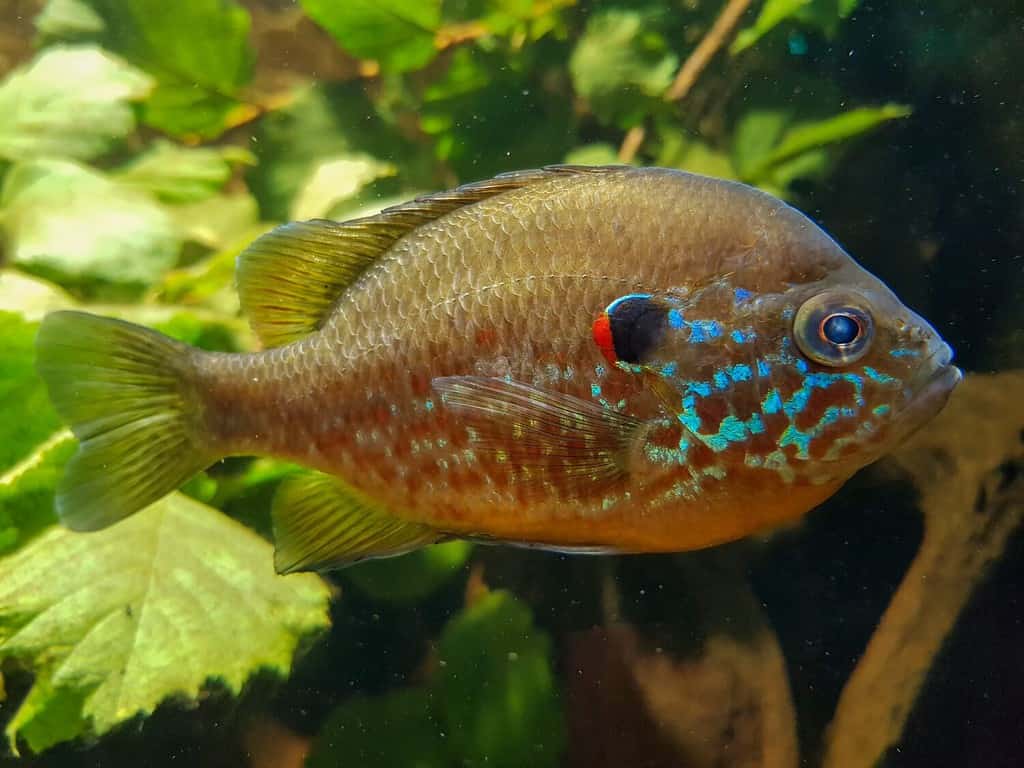Fishing is a very popular activity in Ohio. The Division of Wildlife in Ohio manages the fisheries of 124,000 acres of inland water. Over 2 million anglers fish in Ohio’s lakes, rivers, ponds, and reservoirs. Popular Ohio fishing lakes include Antrim Lake, Hoover Reservoir, Buckeye Lake, Madison Lake, and Ross Lake. One of the most common fish species in the state is the carp. Follow along to discover the largest carp ever caught in Ohio and other impressive fishing state records.
What is the Largest Carp Ever Caught in Ohio?
The largest carp ever caught in Ohio weighed 50 pounds. Judson Holton caught this massive 50-pounder in 1967 in Paint Creek. This gigantic marvel was 40 inches long. As stunning as this record is, it’s half the size of the world record. Michel Schoenmakers caught a 112-pound and 14-ounce carp in the Euro-Aqua Lake in Hungary in 2018.

The largest carp ever caught in Ohio weighed 50 pounds and was 40 inches long.
©Milan Rybar/Shutterstock.com
About Common Carp
The common carp, also known as the Eurasian carp, is native to lakes and large rivers in Europe and Asia. Although common carp aren’t native to North America, they are common in the United States. Currently, there are two common carp subspecies, the Cyprinus carpio carpio and Cyprinus carpio yilmaz.
Appearance and Size
Common carp are large and robust fish. They are very shiny and have large conspicuous scales. Most common carp are almost entirely dark gold or rubbery orange. Common carp have downwards-turned mouths and two pairs of barbels.
The average size of a common carp is 16 to 31 inches long. They also weigh about 4.4 to 30.9 pounds.

On average, common carp in the wild are between 16 to 31 inches long.
©Vladimir Wrangel/Shutterstock.com
Distribution and Habitat
Common carp are native to Europe and Asia. They are highly invasive and have been introduced to at least 59 countries. They are very tolerant of different conditions, including temperatures ranging from 37 to 95 °F. Common carp have few natural predators, which results in them affecting habitats and their environment. They destroy a lot of submerged vegetation, which gets rid of much-needed hiding spaces for small and young fish. The vegetation is also important for ducks and other aquatic birds.
Diet
So, what do common carp eat? These massive fish are omnivores. They eat anything from aquatic plants to insects, crustaceans, other fish, and fish eggs. Common carp mainly scavenge for food at the bottom of bodies of water. They eat at any time but are most active at night.
Predators
Due to their size, common carp have few to no natural predators aside from humans. Are they hard to catch? Common carp can be difficult to catch after they grow more than 10 pounds. They have small mouths and are shy.
Other Fish in Ohio
Ohio has some impressive fishing records. Within the state are over a dozen freshwater fish species. Follow along to discover other fish species in Ohio and their records.
Lake Trout
The first fish on our list is the lake trout. These fish are native to northern North America but have been introduced to other states in the United States. Lake trout are typically between 2 to 3 feet long and can weigh as much as 102 pounds. Ohio’s largest lake trout is about a fifth of the size of the largest recorded lake trout. In 2000, Tom Harbison caught a 20-pound and 7-ounce lake trout in Lake Erie. It was also 34 inches long.

Lake trout are about 2 to 3 feet long.
©U.S. Fish and Wildlife Service / public domain – Original / License
Spotted Bass
The next fish on our list is the spotted bass. This lovely bass is native to the Mississippi River basin and across the Gulf states. Spotted bass though are found across the United States and are an invasive species in southern Africa. Spotted bass range in size. The average size of a spotted bass is 10 to 15 inches long. In 1976, Roger Trainer caught a 5-pound and 4-ounce bass in Lake White. It was 21 inches long.

The largest spotted bass ever caught in Ohio weighed 5 pounds and 4 ounces.
©Sean McVey/Shutterstock.com
Pumpkinseed Sunfish
Pumpkinseed sunfish are also found in Ohio. They are small and medium-sized fish native to North America, although you can find them in Europe. They are an invasive species in Europe. Pumpkinseed sunfish are small, only about 4 inches long. They rarely weigh more than one pound. The largest pumpkinseed sunfish ever caught in Ohio was 9.5 inches long. In 2001, Terry Rush caught a 12-ounce pumpkinseed sunfish in a private pond.

Most pumpkinseed sunfish weigh less than a pound.
©Fabian Junge/Shutterstock.com
Green Sunfish
Another fish found in Ohio is the green sunfish. They are listed as Least Concern on the IUCN Red List. Green sunfish are native to large parts of North America. Although common in the United States, it’s an invasive fish species in Florida, New Jersey, Arizona, and Georgia. On average, green sunfish are 3 to 7 inches long. The Ohio green sunfish state record surpasses this by quite a bit. Timothy C. Hively caught the state-record green sunfish in 2005. He caught a 10 5/8-inch long green sunfish.

Green sunfish are an invasive species in Florida and New Jersey.
©Sean McVey/Shutterstock.com
Longnose Gar
Last but not least is the longnose gar. These long fish have tough scales. They have no natural predators as adults, except for humans, and the occasional American alligator. Longnose gars have been present in North America for about 100 million years. These old fish can reach up to 6 feet long. The largest longnose gar ever caught in Ohio was 49 inches long. Flora Irvin caught a 25-pound longnose gar in the Ohio River on August 31, 1966.

Longnose gar are old fish native to North America. Despite their tough appearance, they are harmless to humans.
©Mikhail Blajenov/Shutterstock.com
The photo featured at the top of this post is © Jane Rix/Shutterstock.com
Thank you for reading! Have some feedback for us? Contact the AZ Animals editorial team.







